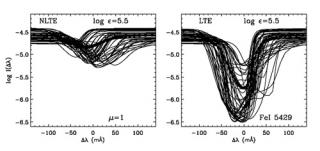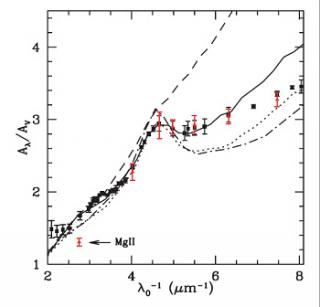
The abundances of oxygen and iron in metal-poor stars have been determined through non-LTE radiative transfer simulations in three-dimensional (3D) hydrodynamical models of their atmospheres. The performing of this type of calculations required to develop first very efficient numerical methods and computer programs. Taking into account that the atmospheres of the stars are 3D systems and the impact of non-LTE effects leads to very significant changes in the derived chemical abundances. It has been concluded that the metalicity of some metal-poor stars could be significantly larger than
